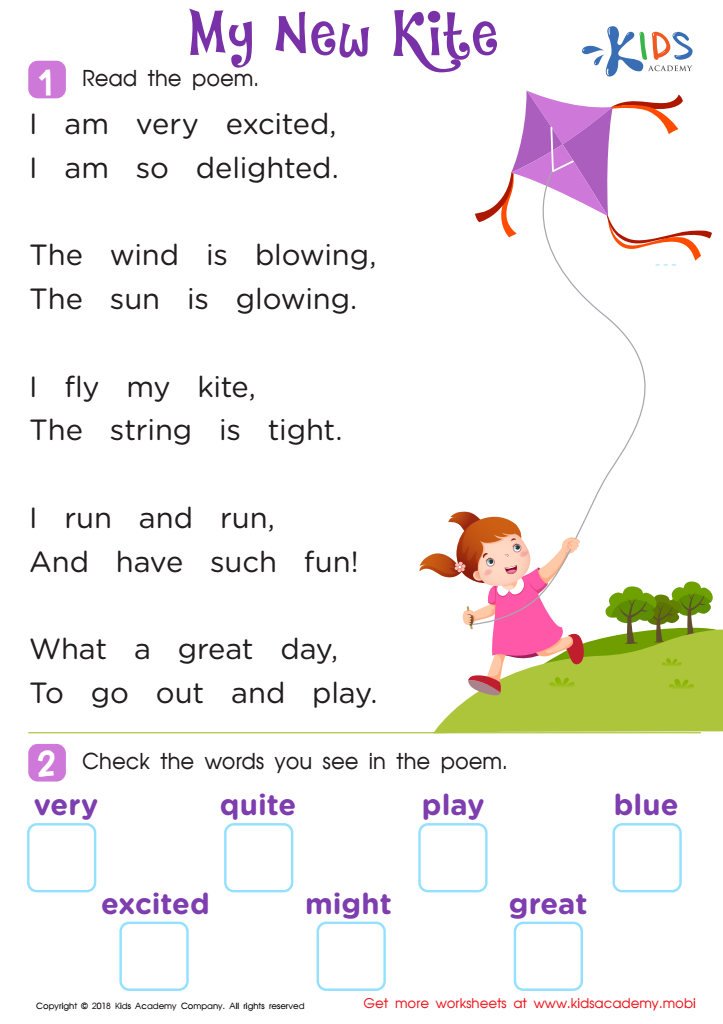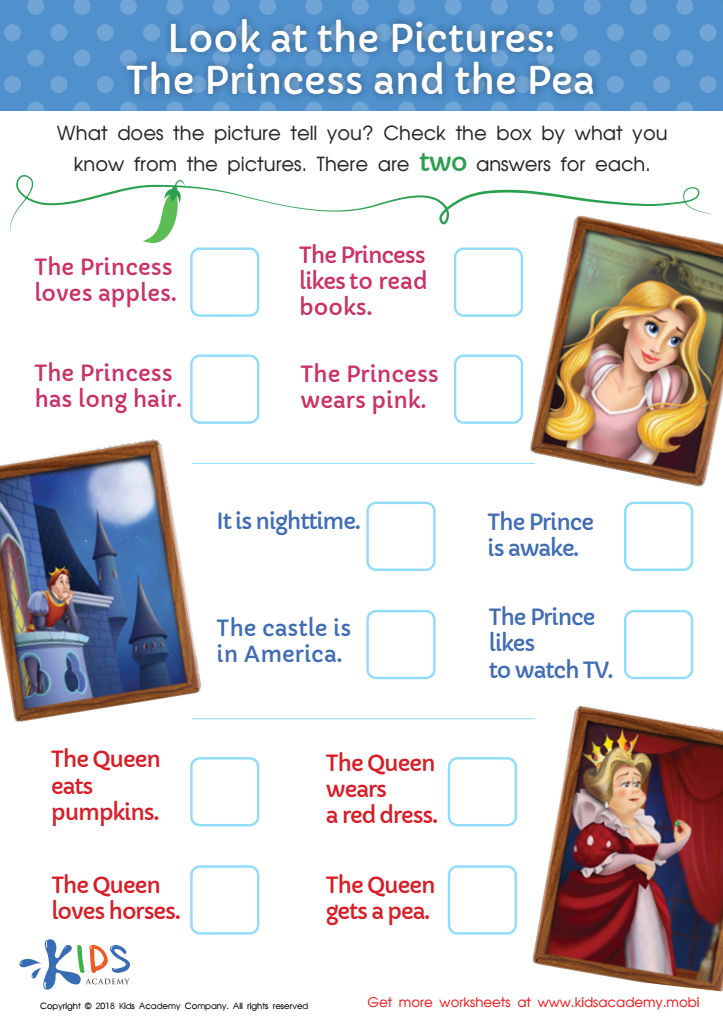Story sequencing Normal Reading Fiction Worksheets for Ages 7-8
10 filtered results
-
From - To
Enhance your child's reading comprehension with our Story Sequencing Normal Reading Fiction Worksheets designed for ages 7-8. These expertly crafted worksheets help young readers develop critical thinking and narrative skills by organizing events in the correct order. Through engaging activities and relatable stories, children will boost their ability to understand the sequence of events, a fundamental aspect of reading comprehension. Perfect for classroom use or at-home practice, our worksheets offer fun and educational opportunities for your young reader to improve their storytelling abilities. Visit Kids Academy to explore our extensive collection of resources and make learning enjoyable today!


Robin Hood Folktale Worksheet


Poem: My New Kite Worksheet


Sequence: Jack and The Beanstalk Worksheet


Sequencing: The Tortoise and the Hare Worksheet


Jack and Beanstalk Worksheet


Little Red Riding Hood Printable


Cinderella: Beginning, Middle and End Worksheet


The Boy Who Cried Wolf Worksheet


Look at the Pictures: The Princess and the Pea Worksheet


The Boy Who Cried Wolf Part 2 Worksheet
Story sequencing is a pivotal aspect of developing reading and comprehension skills in children aged 7-8. At this age, students are transitioning from learning to read to reading to learn. Understanding the sequence of events within a story helps children grasp the narrative structure, which enhances overall comprehension. Story sequencing enables children to recognize the beginning, middle, and end of a story, offering a framework that aids memory retention and understanding.
When parents or teachers emphasize story sequencing in normal reading fiction at this age, it supports children's cognitive development. It trains their brain to organize and categorize information logically, bolstering critical thinking skills. Children become better at predicting outcomes and recalling central themes, characters, and settings, improving their ability to relate stories to their own experiences.
Moreover, mastering story sequencing lays the foundation for essential writing skills. As children comprehend the linear progression of a story, they are better equipped to create their own narratives, fostering creativity and communication abilities. Additionally, discussing and practicing sequencing can enhance vocabulary and language skills, as children recount events in their own words.
In summary, prioritizing story sequencing prepares young readers not only for academic success but also for effective communication and critical thinking in everyday life.

 Assign to My Students
Assign to My Students




















